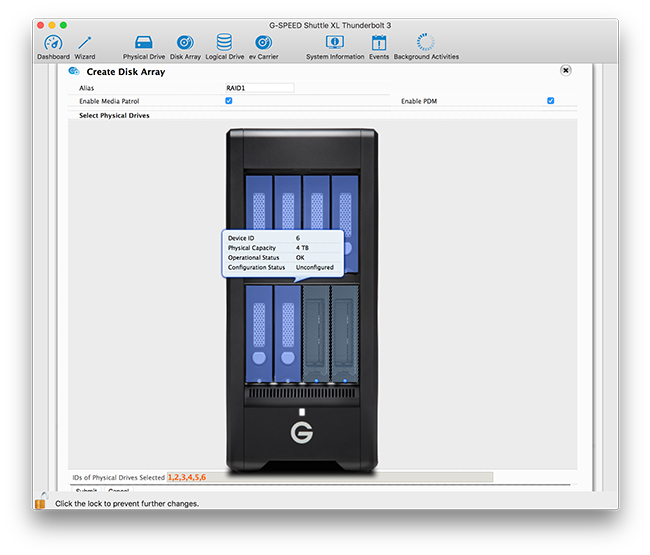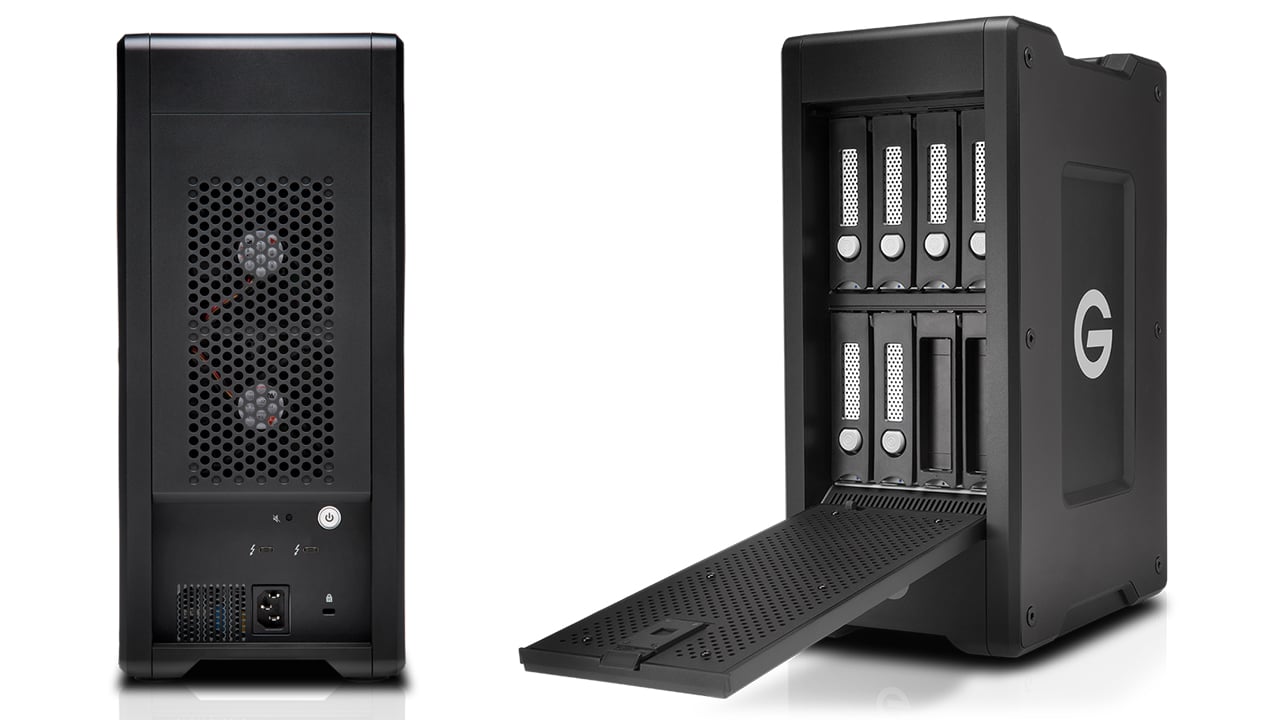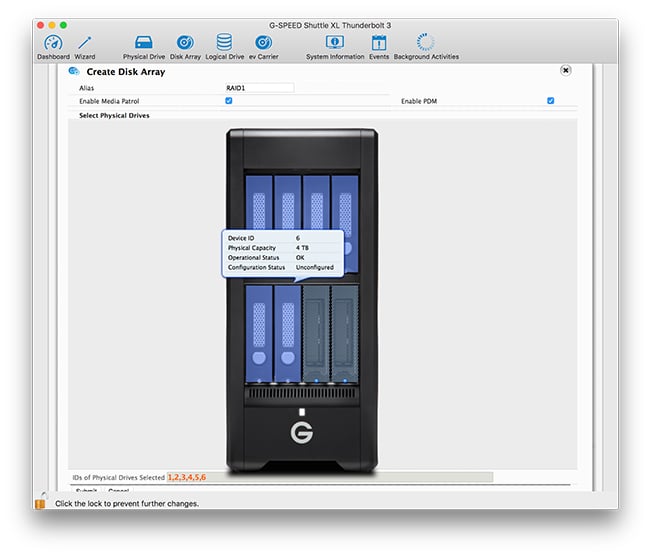

Review: If serious grunt and reliabilty in the storage stakes is what you need, we take a good look at G-Technology's Thunderbolt 3 Shuttle XL RAID enclosure system.
If there’s one thing that you cannot escape from when working with video, it’s the issue of storage. Higher resolutions and bitrates have meant increased demand on our storage requirements. Not just that but we also require fast storage. Very fast storage.
SSD drives are an obvious contender for this, but as we all know, they can be hugely expensive in the sort of capacities you need working with uncompressed or extremely high resolution video. Especially if you want them in a RAID configuration. But if you are thinking about having a truly robust and reliable disk array, spanning, say 6-8 drives or so, then you probably shouldconsider traditional HDDs for the purpose.
Here's where the G-Technology G-Speed Shuttle XL with EV series bay adaptors comes in. The G-Speed Shuttle has been available for a good while now with Thunderbolt 2, but now it is also being supplied with Thunderbolt 3 connectivity.
The system has a total of 8 hard drive bays with capacities from 24TB through to 72TB. Our sample came with 24TB of space via 6 drives. The EV Series bay adaptors are a really great workflow addition to the system, which I’ll go into a bit later.
It's tough
The G-Speed Shuttle XL housing itself is a tough looking beast. It feels as safe as a brick house, while a nicely moulded in top handle allows it to be carried from place to place. Make no mistake, this isn’t a portable drive system designed to go alongside your computer in Star Bucks. But for moving from shooting location to edit suite it will work nicely, and is reassuringly robust feeling.
It has two Thunderbolt 3 ports (USB-C type), allowing daisy chaining to other devices, as well as a three pin power cord socket. It all looks fantastic. The front is where the real business happens. The front door is flipped open to reveal the swappable drive bays.
The EV bays on the model supplied to us are a very nice addition. Simply they give the ability to plugin any of G-Technologies EV Series drive systems. This means that you can plug in up to two of their external mobile rugged SSD drives for instance, or an EV Series CFast card reader for instance. In other words if you have been recording from your camera to such a drive or card, or had transferred the footage to one while on location, they can be plugged right on into the G-Speed Shuttle drive enclosure.

The G-Speed Studio software utlity.
Configuration and speed
In order to use the drives you will need to install the G-Speed Studio software utility, which gives full control over the Shuttle's formatting and RAID configuration. It comes from the factory with RAID 5 set up. This is a great configuration to have since it allows redundancy while also being much faster than RAID 1, which gives full redundancy at the expense of speed. The system is configurable to RAID 0 as well for the fastest speeds. But of course you will lose the safety net of a redundancy drive. Unless you want the fastest speed possible than the default RAID 5 setup works wonderfully. The software took a bit of research to find out what I was doing. Eventually using this excellent, and very funny, tutorial video from G-Technology. Once I had it figured out though, changing the settings was easy.
Speaking of speed, G-Technology claims that it is capable of up to 1500MB/s transfer speed. In my tests in RAID 0 it didn’t come far off. My results were as follows, using the Blackmagic Disk Speed utility. These figures were based upon when the test settled down into a roughly constant rate.My figures don't disprove G-Technology's: they just illustrate possible differences between host computers.
RAID 0: Write 1349MB/s - Read 1050MB/s.
RAID 1: Write 518MB/s - Read 485MB/s.
RAID 5: Write 1067MB/s - Read 780MB/s
So not far off the mark from the claimed figures. For reference my internal SSD managed around 1735MB/s for both read and write. So the G-Speed Shuttle XL does very well for a traditional set of platters going through a connection port.
For real world file transfer on a folder of 64GB it took 1 minute 8 seconds to copy from my internal SSD over to the G-Speed, and 1 minute 15 seconds to transfer from the G-Speed to the internal drive.
Performance then is very good.
In terms of usage, the system isn’t the quietest around. If you are housing this permanently in an edit suite you’ll likely want it in a soundproof enclosure since the fan can be quite loud. But such things are par for the course with systems such as this.
Conclusions and price
Price? The base level 24TB we were supplied with goes for $2799.95, while the top tier 72TB system retails for $7699.95. Such figures might seem eye watering to average users, but these systems are aimed at people for who data integrity is absolutely a core part of what they do. As such, which its ease of configuration and speed, the G-Speed Shuttle XL would certainly appear to be a system such users could give serious consideration to.
For more information head on over to the G-Technology website.
Tags: Technology


Comments